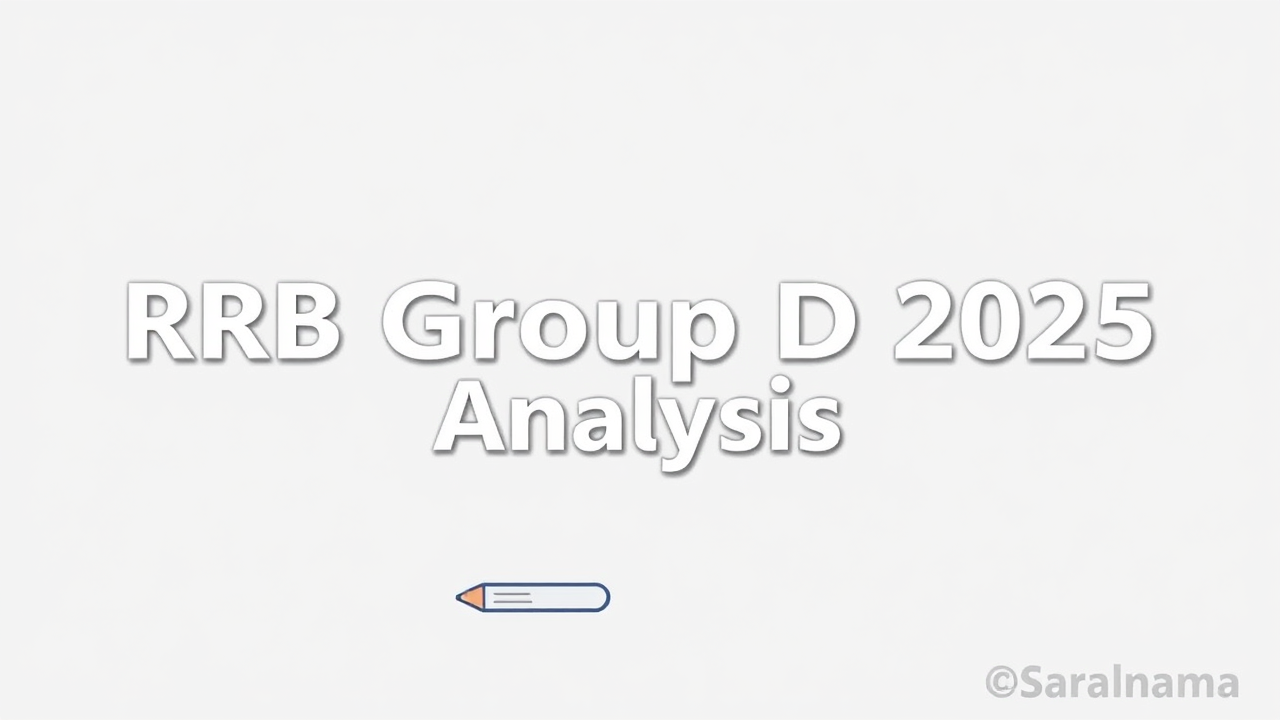The RRB Group D 2025 exam is a crucial recruitment test for railway positions across India. Scheduled from November 27 to January 16, 2026, the computer-based test (CBT) will be conducted in multiple shifts daily. Candidates appearing for this exam will be evaluated across four key sections: General Science, Mathematics, General Intelligence and Reasoning, and General Awareness. The exam carries 100 marks and includes negative marking where 0.33 marks are deducted for incorrect answers.

Exam Structure and Key Details
The RRB Group D exam is designed to assess candidates' comprehensive knowledge and skills. The test comprises four distinct sections with varying question numbers: General Science has 25 questions, Mathematics contains 25 questions, General Intelligence and Reasoning includes 30 questions, and General Awareness and Current Affairs covers 20 questions. Candidates must complete the exam within 90 minutes, with additional time provided for those accompanied by a scribe. The exam will be conducted in three daily shifts: the first shift begins at 9:00 AM, the second at 1:00 PM, and the third at 5:00 PM. Candidates are required to report at the examination center well in advance, with gate closure strictly enforced 30 minutes before the exam starts.
Exam Day Guidelines and Preparations
On the examination day, candidates must follow strict guidelines to ensure a smooth testing experience. Essential documents include the RRB Group D admit card and a valid government-issued photo identity proof. Certain items are strictly prohibited inside the examination center, including shoes, jackets, hoodies, belts, and caps. The question paper will be available in 15 regional languages besides English and Hindi, ensuring accessibility for candidates across different linguistic backgrounds. Candidates are advised to carefully read and understand the exam pattern, marking scheme, and time management strategies before the actual test.
Difficulty Level and Good Attempt Strategies
Based on preliminary analysis, the RRB Group D exam difficulty level varies across sections. General Intelligence and Reasoning is considered easy to moderate, while General Awareness appears moderate. Mathematics is rated as moderate, and General Science ranges from moderate to difficult. Candidates can aim for 51-61 total good attempts across sections. Specifically, candidates might target 8-10 questions in General Awareness, 17-19 in Reasoning, 15-17 in Mathematics, and 12-24 in General Science. Strategic preparation and smart attempt selection are crucial for maximizing scores.
Negative Marking and Score Calculation
The RRB Group D exam employs a structured negative marking system that requires careful answering strategy. For each correct answer, candidates are awarded one mark. Conversely, one-third (0.33) mark is deducted for every incorrect response. This marking scheme emphasizes the importance of accuracy over attempting every question. Candidates should focus on attempting questions they are confident about and avoid random guessing. The final score will be calculated based on the total number of correct and incorrect answers, making strategic question selection critical for success.
Exam Centers and Regional Distribution
The RRB Group D exam will be conducted across multiple centers spread throughout India. The extensive geographical coverage ensures that candidates from various regions can participate in the recruitment process. The exam centers are designed to accommodate candidates from different states and union territories, reflecting the Indian Railways' commitment to inclusive recruitment. Candidates should carefully check their assigned exam center, reporting time, and follow all instructions provided in their admit card to avoid any last-minute complications.
Qualification and Selection Process
Qualifying the CBT is the first step in the RRB Group D recruitment process. Candidates who perform well in this stage will be called for subsequent rounds, including Physical Efficiency Test (PET) and document verification. The PET is a qualifying round, meaning candidates must meet specific physical standards. Final selection depends not just on CBT performance but also on candidates successfully clearing document verification and medical examinations. This multi-stage selection process ensures that only the most suitable candidates are selected for railway positions.
Preparation Tips and Mock Test Strategies
Successful preparation for the RRB Group D exam requires a comprehensive approach. Candidates should focus on thoroughly understanding the syllabus, practicing previous year question papers, and taking mock tests to improve time management skills. Special attention should be given to General Science and Reasoning sections, which often require deeper conceptual understanding. Candidates are advised to develop a balanced study plan that covers all four sections, with emphasis on weak areas. Regular practice, current affairs reading, and mock test analysis can significantly improve performance and confidence.
Post-Exam Analysis and Next Steps
After the exam, candidates should carefully track official announcements regarding answer keys, result dates, and cutoff marks. The RRB will likely release an official answer key allowing candidates to estimate their probable score. Candidates can challenge the answer key if they find any discrepancies. Those who qualify the CBT will receive further communication about PET and document verification stages. Staying informed through official RRB websites and maintaining patience during the result process is crucial for candidates aspiring to secure a railway job.
Source: Link
